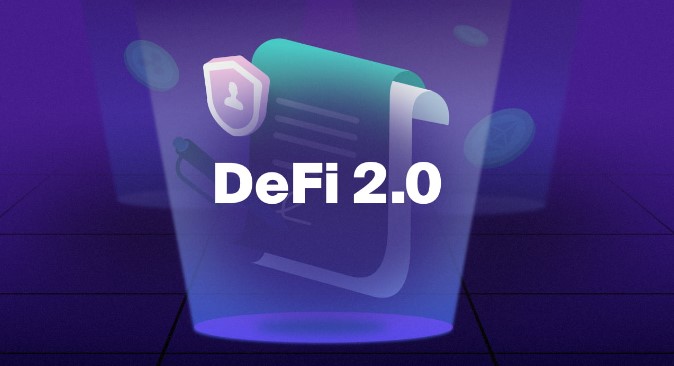As a result of blockchain-based innovation, decentralized finance has become one of the most influential and successful waves. A decentralized financial industry is a broad spectrum of decentralized applications that disintermediate traditional financial services and introduce whole new economic primitives. Blockchains powered by smart contracts and secured oracle networks such as Chainlink are integral parts of this sector.
The inherent advantages of permissionless composability and open-source development culture contribute to the continued evolution and iteration of DeFi protocols over time. With the surge in liquidity-focused decentralized finance projects over the past few months, DeFi 2.0 represents the next wave of innovation in the DeFi ecosystem.
Introduction To DeFi 2.0
In the blockchain community, DeFi 2.0 is a term that refers to a subset of DeFi protocols that have been built upon previous breakthroughs like yield farming, lending, and others. Liquidity constraints exist in many on-chain systems with native tokens. DeFi 2.0 implementations focus on overcoming these constraints.
Foundational Developments of DeFi
Many pioneers of the DeFi economy, including Uniswap, Aave, Bancor, MakerDAO, and many others, have created essential “money LEGOs” for a developing economy. A number of financial services are offered by these protocols, including lending, borrowing, and stablecoins.
They function similarly to traditional financial services, but they are decentralized, giving users more control over their assets and increasing transparency. Despite this, DeFi services provide greater transparency and control than centralized companies because of their underlying technology. Therefore, decentralized services like DeFi are based on a variety of technological implementations.
The main goals of DeFi 2.0
A new and improved version of the decentralized finance app, DeFi 2.0, aims to help businesses instead of just individuals. It is built on the foundation laid by older apps and offers a more sustainable and long-term solution. In addition to being dependent on third parties, DeFi may also be unstable due to its reliance on incentives and third-party providers. With DeFi 2.0, new protocols are being created that enable users to control liquidity on their own without relying on outside assistance.
Also See: Apps Like Yoyo Wallet
In addition to assisting businesses, DeFi 2.0 is making tools that enable decentralized organizations to have healthy competition with traditional firms. These amazing tools will give companies the ability to use DeFi in new and creative ways. Therefore, DeFi 2.0 aims to provide companies and industries with long-term, sustainable solutions.
Conclusion
DeFi 2.0 pushes the boundaries of what’s possible in blockchain-based finance, representing the next frontier in decentralized finance. It is likely that DeFi will become more significant in the broader financial landscape as the ecosystem evolves, offering alternatives to traditional financial systems and addressing user challenges.
DeFi 2.0 has the potential to reshape finance in an entirely decentralized manner with its innovations in cross-chain compatibility, advanced oracles, risk management, and more. However, recognizing that the fast-paced nature of this industry presents both opportunities and risks, it is imperative to proceed with caution. Moreover, you can use crypto charting and trading platforms, including granimator.io, for accurate results.
